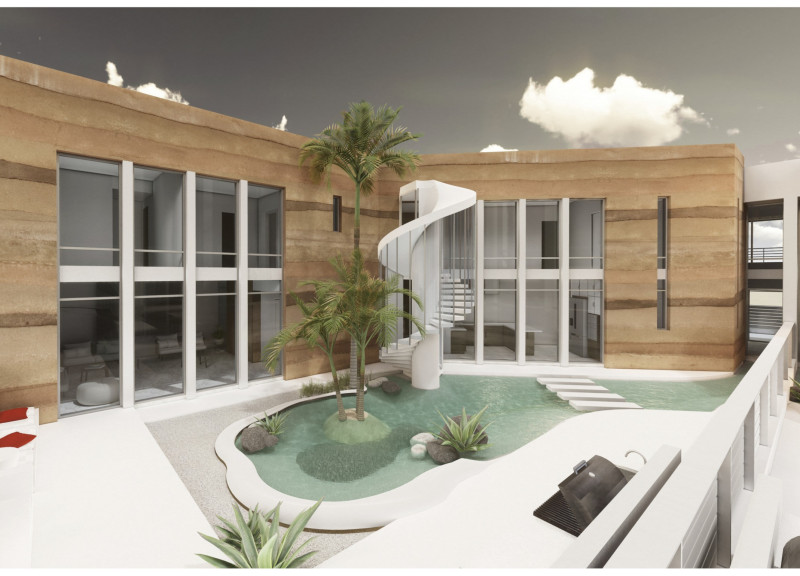5 key facts about this project
At its core, this project represents a deliberate effort to foster connections between individuals and their environment. The building functions as a multi-purpose space, which may serve roles such as a community center, educational facility, or mixed-use development. Its design encourages interaction among users, promoting social cohesion while also addressing pertinent cultural and social needs. The integration of diverse spaces within the structure underscores its versatility, allowing for a variety of activities and events that can adapt to the community's evolving demands.
One of the most significant elements of the design is its careful consideration of the site's geographical context. The building's orientation and facade are strategically designed to maximize natural light and ventilation, taking advantage of the local climate to enhance energy efficiency. This approach not only reduces the building's carbon footprint but also creates a welcoming atmosphere for occupants.
The material palette employed in this project is another noteworthy aspect of its design. A combination of reinforced concrete, glass, and timber cladding reflects a balance between durability and warmth. The use of high-performance insulation ensures a comfortable indoor environment while minimizing energy consumption. Large, floor-to-ceiling windows facilitate a visual connection between interior and exterior spaces, allowing occupants to engage with the surrounding landscape.
Furthermore, the project showcases a unique approach to landscaping, integrating green roofs and outdoor gathering spaces into the architectural design. These elements create a seamless transition between built and natural environments, promoting biodiversity and providing tranquil outdoor areas for relaxation and community activities. The incorporation of native plant species not only enhances the aesthetic appeal but also supports local ecosystems, demonstrating a deep respect for environmental sustainability.
Attention to detail is evident throughout the design. The thoughtful arrangement of spaces considers user flow and accessibility, ensuring that all individuals, regardless of mobility, can navigate the building with ease. Interior spaces are designed to be flexible, with movable partitions that allow for customization based on specific needs and events. Such adaptability is a reflection of contemporary design principles that prioritize user experience and interaction.
In terms of aesthetics, the building's form and facade engage with the surrounding architecture without overwhelming it. The design creates a rhythm and texture that contributes to the visual landscape, encouraging exploration and curiosity among passersby. Architectural details, such as overhanging canopies and shaded terraces, further enhance usability while adding character to the overall project.
The integration of technology within the building design is also noteworthy, as smart building systems are employed to optimize energy management and user comfort. Features such as automated lighting and heating controls not only improve the efficiency of the building but also contribute to a responsive environment that can adapt to changing conditions throughout the day.
This architectural project stands as a testament to the possibilities inherent in thoughtful design. By prioritizing sustainability, community interaction, and user experience, it sets a standard for future developments. The unique design approaches employed not only enhance the functionality and aesthetics of the building but also contribute positively to the urban context in which it resides.
Readers seeking to delve deeper into the project will find that examining the architectural plans, sections, and overall designs can provide valuable insights into the innovative ideas that shaped this noteworthy project. Exploring these elements will reveal the careful thought and consideration that have gone into creating a space that truly reflects the needs and aspirations of its users.


























